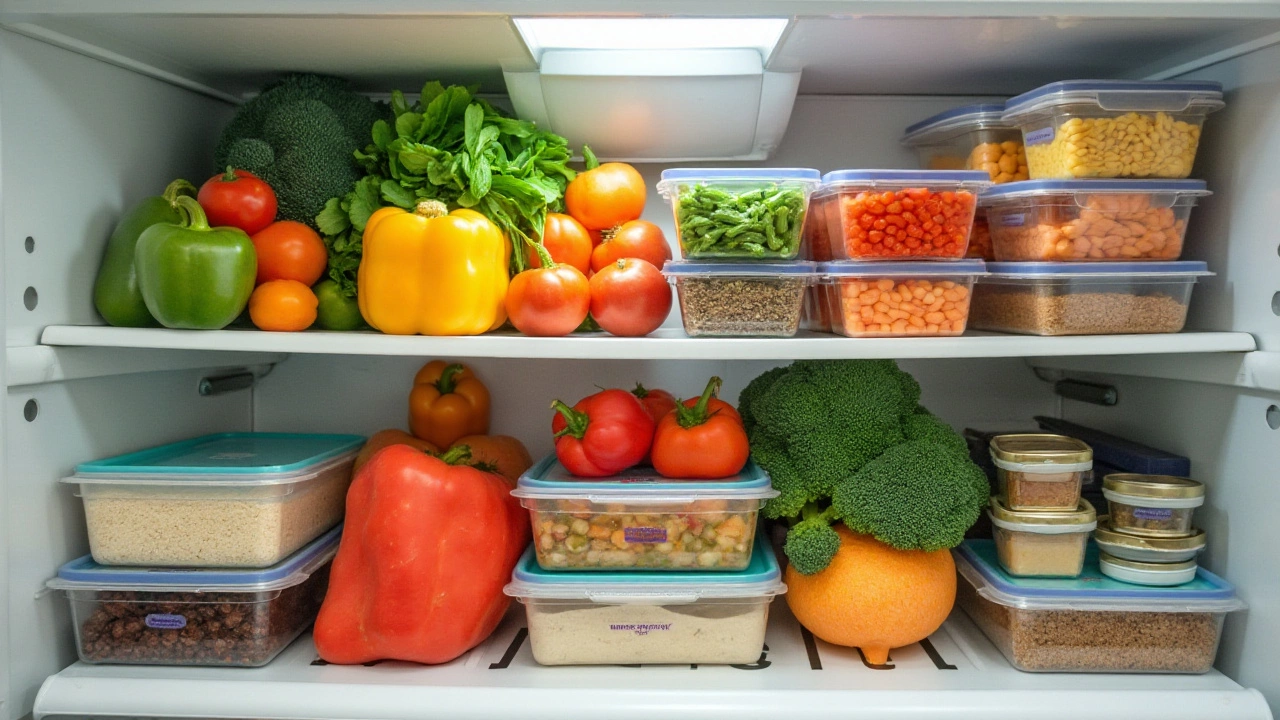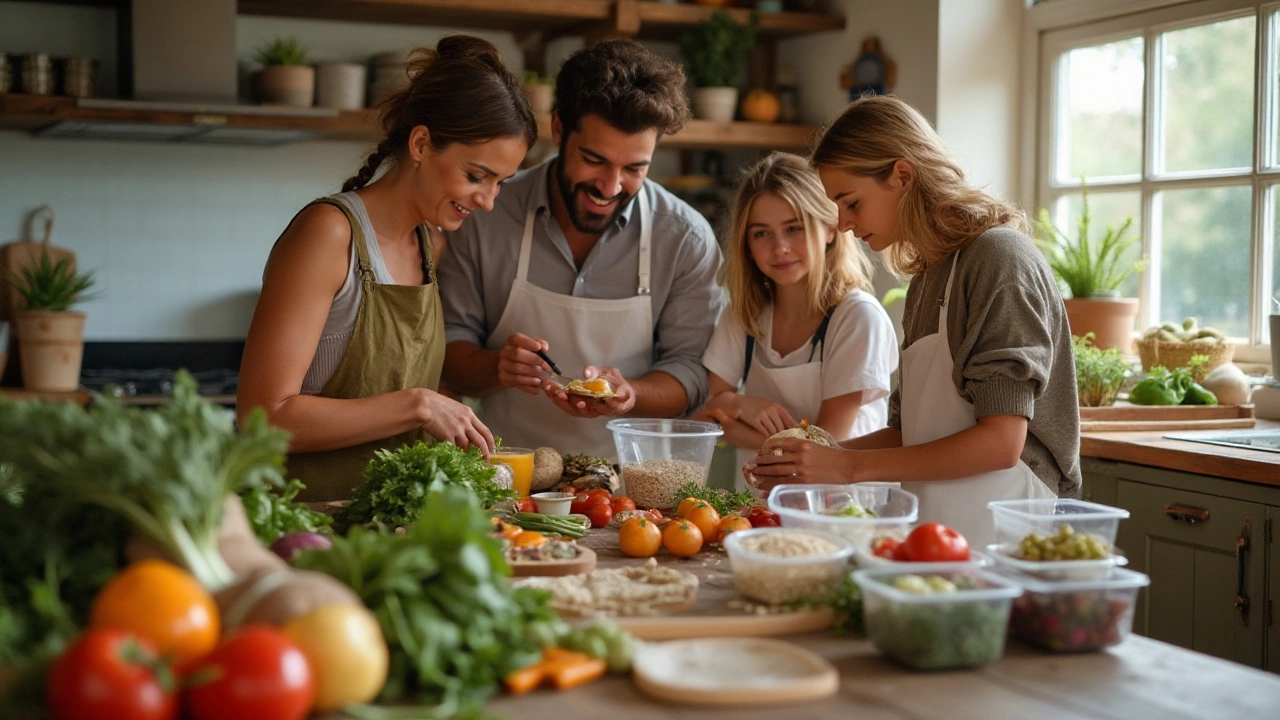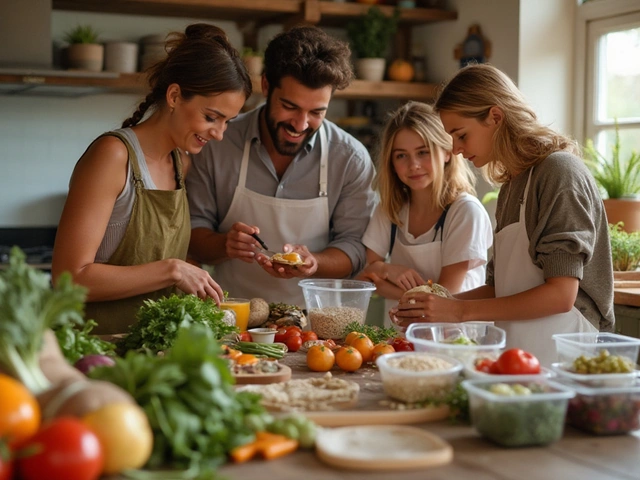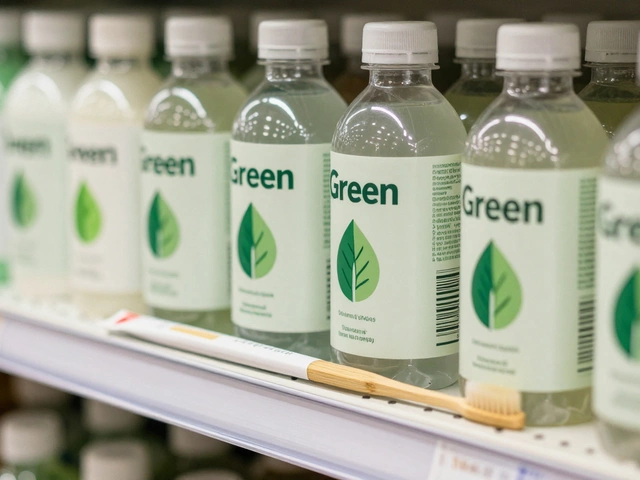Embracing the concept of meal prep can revolutionize your kitchen routine by easing the daily pressure of deciding what to cook. It's more than just a trend—it's a lifestyle choice that paves the way for healthier eating habits and better time management. If you're new to meal prepping or looking to refine your technique, you've come to the right place.
Diving into meal prep doesn't require complex skills or fancy equipment. With a little planning and some practical tips, you'll soon be saving time and money while nourishing yourself and your loved ones with wholesome, delicious meals. Let's explore how to get started and make meal prepping a seamless part of your weekly routine.
- Understanding Meal Prep Basics
- Benefits of Meal Prepping
- Essential Tools and Ingredients
- Planning Your Weekly Menu
- Efficient Batch Cooking Techniques
- Storage Solutions for Freshness
Understanding Meal Prep Basics
Meal prepping is a game-changer for anyone seeking to streamline their kitchen duties. It involves planning, preparing, and portioning your meals ahead of time. While it might initially seem daunting, grasping the basics can lead to a smoother, healthier lifestyle. At its core, meal prep requires an upfront commitment that pays off throughout the week. The first step is clarifying your goals. Whether it's eating healthier, saving money, or reducing stress, knowing your purpose helps tailor your approach. Armed with this clarity, consider your schedule and dining preferences. Do you crave variety or stick to tried-and-true recipes? This insight will guide you in crafting a realistic plan that suits your routine.
As you embark on this culinary journey, familiarize yourself with essential meal prep techniques. Batch cooking is a popular choice, allowing you to cook in larger quantities, then store meals for future consumption. Alternatively, ingredient prep might better fit your lifestyle. This involves preparing individual ingredients in advance, like washing and chopping vegetables or portioning proteins, to assemble quickly into various dishes later. Choosing between these methods—or a blend of both—depends on personal preference and available time. Another technique involves making freezer-friendly meals that can be stored for weeks. This is particularly beneficial for those busy weeks when cooking from scratch isn't possible.
Organizing your workspace is another fundamental aspect of meal prepping. A clutter-free kitchen counter, along with the right tools and containers, sets the stage for efficiency. Consider investing in durable, reusable storage containers of varying sizes to store different meal portions. When you're equipped with the essentials, prepping becomes a breeze. Create a designated area in your fridge and pantry for your prepared meals to avoid last-minute scrambles. This setup not only saves time but also minimizes waste by keeping track of what you have. Modern kitchen gadgets like slow cookers or Instant Pots can also make meal prep less time-consuming and more convenient.
One known fact is that meal preppers consume more homemade meals, which tend to be healthier than takeout options. This consistent habit often translates into consuming fewer calories, less sodium, and more nutrients. In a world where fast food is frequently more accessible than fresh fruits, making the conscious choice to prepare your meals is a valuable step towards healthier living. Preparing food in advance enables you to take control of your nutrition, helping you avoid impulse eating and unnecessary snacking. Plus, by cooking your own meals, you get to choose ingredients that align with your dietary needs and preferences, enhancing your overall eating experience.
"Meal prep not only saves money but also reduces food waste and helps control portion sizes," says renowned nutritionist Dr. Sarah Brewer.
To make the process manageable, start small. Experiment with prepping one or two days' worth of meals. Gradually expand your repertoire and experiment with different recipes. After each prep session, reflect on what worked and what didn’t. Did certain meals retain their freshness better than others? Was there a particular dish that felt repetitive? Learn from these observations and refine your strategy over time. By adopting a curious mindset, you'll naturally find methods that work best for you. Remember, meal prep is a journey. It's not about perfection but progress—each small step contributes to mastering this practical skill.
Benefits of Meal Prepping
When you start taking meal prep seriously, the perks quickly become evident. First and foremost, one of the prime advantages is the substantial saving you achieve—from both time and money perspectives. By setting aside a dedicated few hours once a week to plan and prepare meals, you free yourself from the daily scramble of deciding what to cook and buying last-minute groceries. This organized approach minimizes waste since you only purchase and prepare what you need. Imagine walking into your kitchen and finding neatly packaged, ready-to-eat dishes awaiting you. It's like unlocking an oasis of calm in the whirlwind of daily responsibilities, fostering a more relaxed atmosphere where healthy eating becomes second nature.
Nurturing a healthier lifestyle is another significant benefit of meal prepping. With your kitchen stocked with balanced, home-cooked meals, you're less likely to cave into the temptations of fast food or unhealthy snacks. It's about control; you control the ingredients going into your recipes, allowing you to cut down on sugar, salt, and unhealthy fats. This is particularly beneficial for those with specific dietary goals, whether you're looking to lower cholesterol or manage diabetes more effectively. By intentionally selecting fresh fruits, vegetables, lean proteins, and whole grains, you're setting yourself up for nutritional success.
Meal prepping can also be your vehicle to enhance culinary skills by encouraging you to experiment in the safety of your own home kitchen. This isn’t about channeling your inner MasterChef, but rather discovering new flavors and cuisines at your own pace. When you plan your meals in advance, you can introduce variety without the stress of deciding at the last moment. Trying out new recipes becomes a fun challenge, not a chore.
Efficient cooking via meal prepping fosters mindfulness about eating and food consumption while also helping reduce waste. The average American household tosses about 32% of its food annually, translating into both environmental and financial costs. By prepping ahead, you can adjust quantities to fit your consumption patterns, minimizing leftovers that go uneaten. Think about a well-organized pantry that feels like a slice of heaven; it radiates possibilities without the waste, paving the way for a more sustainable lifestyle.
On the social front, meal prepping can cultivate positive habits among families and communities. When you involve kids or partners in the planning and cooking process, it becomes a shared activity that solidifies bonds. Taking turns selecting recipes or assisting with different stages of preparation can be both educational and entertaining. It fosters a sense of teamwork and mutual accomplishment, too. It’s not uncommon to hear families recall certain meal prep days fondly; these are the moments where laughter and learning intertwine seamlessly.
"Meal prepping ensures you're consistently prioritizing your health and well-being," says renowned nutritionist Joy Bauer. "With each meal you prepare, you're making conscious decisions about fueling your body properly and respecting your time."
Lastly, meal prepping is adaptable and can be as personalized as you like. From choosing your favorite spices to tailor meal sizes according to portion preferences, the process evolves with you. Whether you're prepping for a single week or a whole month's worth of meals, any system can be adjusted to fit within your lifestyle demands. This adaptability not only enriches your cooking repertoire but also ensures that meal prepping can be a sustainable long-term habit.

Essential Tools and Ingredients
When diving into the world of meal prep, having the right set of tools and ingredients can make all the difference. Just like any skilled artist has their brushes, a good chef relies on essential kitchen tools to create culinary masterpieces. One of the basics includes sturdy containers. Investing in a variety of sizes ensures that your meals are stored efficiently, preserving their freshness and flavor. Glass containers are often preferred for their durability and are microwave safe, allowing you to heat meals directly. Silicone lids can prolong your food's shelf life, another small but mighty tool in the meal prep process. A mandatory gadget is the chef's knife. It's the workhorse of the kitchen, making chopping vegetables or trimming meats a breeze. Paired with a quality cutting board, it’s half the battle won.
Another indispensable piece of equipment is the slow cooker or an Instant Pot. These appliances are game-changers, offering set-and-forget convenience. They champion the time-poor chef's kitchen, slowly imbuing flavor into stews or rapidly pressure-cooking grains without constant supervision. A digital scale helps accurately portion meals, avoiding unintended overindulgence, which is particularly useful for those counting calories or following specific diets. When discussing storing meals, air-tight containers are prime - they not only maintain the food's nutrients but also prevent odors from mingling in your fridge. This is key when preparing multiple meals at once. Efficient cooking practically demands these essentials to make the experience seamless and enjoyable.
But tools are only one side of the equation; the heart of meal prep lies in the ingredients. A well-stocked pantry and refrigerator are the backbone of efficient meal planning. Staples like grains, pasta, and canned beans provide the foundations for many dishes, ensuring you can whip up a variety of meals. Spices and herbs play a critical role, turning bland into grand. They infuse meals with character and variety, with options from aromatic basil to fiery paprika. A diverse selection of proteins like chicken, fish, legumes, and tofu offers a rich tapestry of flavors and textures to explore. Fresh fruits and vegetables bring color, vibrancy, and nutrition,healthy eating essentials in any meal prep routine.
The magic of meal prep isn’t just in the ingredients themselves but in how they’re combined and stored. Consider the versatility of ingredients – roasted vegetables, for example, can be used in salads, wraps, or as simple side dishes. Whole grains can be cooked in bulk and used throughout the week in an assortment of dishes. It's about maximizing the potential of what you have, creatively stringing together multiple meals with fewer ingredients. You might find that incorporating a few high-quality oils and vinegar can elevate dishes with minimal effort. Using olive oil or coconut oil can provide healthy fats and when drizzled over food or used in cooking, they bring out an enhanced depth and aroma to dishes.Mindful selection of tools and ingredients ensures that meal prepping is not just an act of routine, but one of discovery and joy.
"By failing to prepare, you are preparing to fail." – Benjamin Franklin
Planning Your Weekly Menu
When it comes to meal prep, the foundation of your success lies in effective weekly menu planning. This vital step ensures that you not only save precious time during the week but also that you maintain a nutritious and varied diet. Start by assessing your schedule for the upcoming week, considering factors like work commitments, family obligations, and social outings. Knowing what each day looks like will help you identify the days when quick meals are a must or when you have the luxury of spending a bit more time in the kitchen.
Begin by brainstorming a list of meals you and your household enjoy. Try to include a mix of breakfast, lunch, dinner, and snack options to cover all mealtime bases. A helpful tip is to incorporate themes into each night, such as Meatless Monday or Taco Tuesday, to streamline your planning process. When selecting recipes, aim for a balance of nutrients and flavors by including a variety of proteins, vegetables, grains, and healthy fats. Remember, variety is the spice of life, and keeping meals exciting prevents the boredom that often derails well-intentioned meal preppers.
To elevate your planning, consider drafting a simple table of your meal options for the week. You might want to list meals by day and meal type, which helps in visualizing your weekly spread. This approach also aids in identifying any gaps in nutrients, allowing you to make adjustments as needed.
As a prominent nutritionist once said, "Failing to plan is planning to fail." By taking the time to thoughtfully arrange your meals, you'll set yourself up for success and inadvertently create a much healthier routine.
Once you've established a selection of meals, it's time to create your grocery list. Cross-reference your chosen recipes, noting the ingredients you already have and those you'll need to purchase. A detailed list minimizes impulse buys and keeps you on track, ensuring you're purchasing only what you need. Additionally, shopping with a list reduces food waste and contributes to a more sustainable household.
Incorporating Seasonal Produce
Embrace the offerings of each season by incorporating fresh, seasonal produce into your meal plans. Not only are these ingredients at their peak in terms of flavor and nutrition, but they are often more affordable. Seasonal eating also allows for exploration of new ingredients and keeps your meals interesting.Consider preparing a rota of dishes that evolve with the seasons, ensuring a year-round repertoire of delightful and nutritious meals. For example, in winter, root vegetables like sweet potatoes and carrots can be featured, while in summer, you can experiment with vibrant salads highlighting tomatoes, cucumbers, and bell peppers. This not only nourishes your body but also supports local agriculture, contributing to a more sustainable diet.
By incorporating these strategies, planning your weekly menu transforms from a daunting task into a creative endeavor. It's a chance to take control of your dietary habits, bringing joy and health into everyday life. With your menu set, you're ready to conquer the week with efficiency, confidence, and a delicious array of meals at your fingertips.

Efficient Batch Cooking Techniques
Batch cooking is the secret weapon of the seasoned meal prepper. It involves preparing large quantities of food in one go, which can then be portioned out for several meals throughout the week. By embracing batch cooking, you can significantly cut down the time you spend in the kitchen daily, giving you more freedom to enjoy your week without the repetitive chore of cooking from scratch each night.
The magic of batch cooking starts with choosing the right recipes—ones that freeze well and maintain their flavor and texture when reheated. Think casseroles, soups, stews, and hearty baked dishes. These meals aren’t just easy to scale up; they often taste even better after the flavors have had a chance to meld. Prepping in bulk can also be economically sound. As you buy ingredients in larger quantities, you often pay less per unit, which is a win for your wallet. Once the dishes are chosen, the next step is to create a systematic cooking plan. Group tasks such as chopping vegetables or browning meats to streamline the process. The key is to keep the kitchen organized and maintain a steady flow, preventing any bottlenecks that might slow you down.
Amy Stewart, a renowned culinary writer, aptly puts it: “Batch cooking is like an orchestra playing in harmony, where the cook is the conductor orchestrating the symphony of flavors.”
Optimizing Ingredient Use
When you embark on your batch cooking journey, consider the versatility of each ingredient. Start by choosing staple ingredients that can be transformed into multiple dishes. By doing so, you avoid palate fatigue and keep your menu exciting all week long. For instance, a roasted chicken can become the centerpiece for various meals. Serve it with vegetables one night, use leftovers for a chicken salad the next, and then mix it into a wholesome soup later in the week. This technique not only maximizes flavor but also ensures that nothing goes to waste. Prioritize ingredients according to their cooking times. Begin with items that need longer preparation and multitask with shorter tasks while those cook. This way, your oven, stovetop, and hands are all working to their fullest potential simultaneously.
Storing Your Creations
To preserve the quality and flavor of your batch-cooked meals, proper storage is non-negotiable. Invest in a set of reliable containers that stack well, seal tightly, and are microwave or oven safe for easy reheating. Glass containers are ideal for preserving freshness and avoiding any plasticky aftertaste. Label your meals with the date of preparation, especially if you plan to store them in the freezer. Addressing this detail ensures you consume your meals at their peak freshness, minimizing the risk of unintentional hoarding. The freezer is undoubtedly a meal prepper’s best ally. It allows you to safely store your delicious creations and extend their shelf life significantly.
Table:
| Storage Duration | Refrigerator | Freezer |
|---|---|---|
| Chicken Stew | 3-4 days | 3-4 months |
| Vegetable Casserole | 1 week | 3 months |
| Lentil Soup | 4-5 days | 6 months |
Efficient batch cooking ultimately boils down to strategic planning and mindful execution. As you get accustomed to this organized style of meal preparation, you’ll find more pleasure in the process, knowing that every effort made today brings ease in the days to come. So grab your apron, prepare your pots, and get ready to elevate your meal prep game like never before.
Storage Solutions for Freshness
Unlocking the secret to maintaining the crispness and savory flavors of your meal-prepped foods lies in understanding optimal storage methods. From airtight containers to vacuum-sealed bags, choosing the right storage strategy is crucial for preserving the quality and taste of your healthy meals. One reliable tip is to invest in high-quality, BPA-free containers, which effectively seal in the freshness and prevent unwanted odors from creeping in. Consider grouping similar meals together; this not only streamlines your refrigerator space but also makes it easier to locate each meal when needed. Another interesting fact is that glass containers generally preserve flavors better than plastic ones, meaning your food can taste as delicious on day three as it did on day one.
The concept of freezing foods can be a game-changer for those looking to stretch their meal prep over a more extended period. When preparing to freeze, make sure to portion your meals appropriately, as this can save you both time and hassle when reheating. An appealing method is the use of vacuum-sealing machines, which effectively eliminate air from around your food, drastically reducing freezer burn and preserving nutrients. Some meal preppers also rave about its capabilities to accentuate flavors over time.
"Investing in high-quality vacuum-sealed storage can extend the shelf-life of your meals by up to five times," notes a report from the American Institute of Food Safety.
It’s fascinating how the placement within your refrigerator or freezer can impact the longevity of your stored meals. Foods intended for short-term storage should ideally be placed in the refrigerator at temperatures below 40°F. Meanwhile, meals you wish to store long-term go in a freezer kept consistently at 0°F. Keeping an eye on these details can ensure safe meal prepping practices, helping to avert the risks of spoilage. Plus, don't forget to label each container clearly with the date it was prepared, using waterproof markers or erasable labels; this way you don’t play the guessing game every time you open your fridge or freezer.
Have you considered investing in smart kitchen tech? Various smart fridges today come equipped with technologies that maintain precise temperature and humidity levels, adapting to the contents stored within. Although it might seem like a hefty investment initially, the payoff comes in the form of fresher ingredients and energy savings in the long run. Also, don't shy away from utilizing silicone bags or beeswax wraps for smaller items or snacks. These earth-friendly alternatives keep your food fresh, and contribute to reducing single-use plastic waste. The small decisions you make about food storage can make all the difference when it comes to both ecological impact and maintaining the delectable flavors you worked hard to create.










